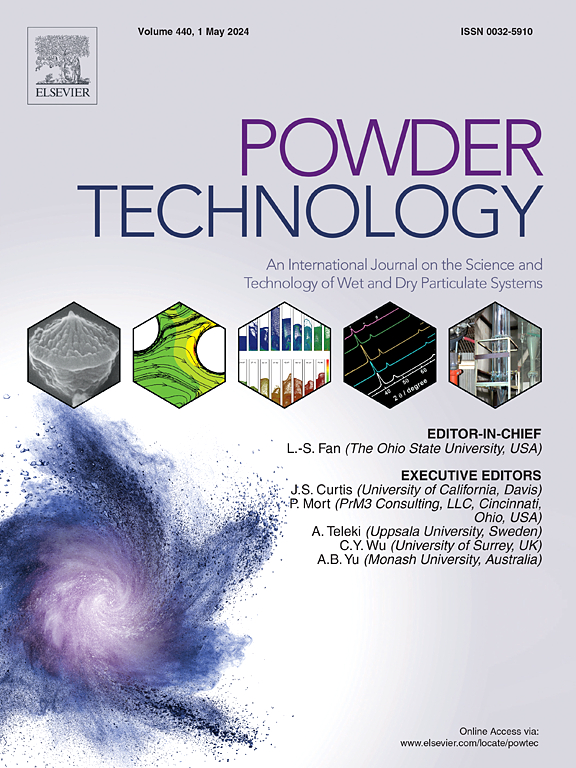Preparation of microstructure controlled spherical co-aggregated composite energetic materials: Synergistic enhancement of safety and thermal stability of CL-20
IF 4.5
2区 工程技术
Q2 ENGINEERING, CHEMICAL
引用次数: 0
Abstract
Regulating the structure of energetic materials to enhance safety performance has become a hot topic for researchers in recent years. This study prepared spherical co-aggregated CL-20/HMX with controllable microstructure using a combination of microfluidic and self-assembly strategies within a modular micro-reaction system. The morphology and agglomeration structures of CL-20/HMX particles were investigated with different mixing plates, solvent/nonsolvent flow rate ratio, and solvent content. Spherical co-aggregated CL-20/HMX co-crystals were prepared under optimized conditions, and the formation mechanism was analyzed. The impact of the spherical aggregation structure on the thermal properties and mechanical sensitivity was thoroughly studied. The results indicate that the spherical co-aggregated CL-20/HMX was assembled from lamellar nanoparticles, controlling CL-20 crystal morphology at the molecular level. CL-20/HMX co-aggregated microspheres exhibit higher mechanical safety and thermal stability than conventional reaction samples and physical mixing samples. Combining spherical aggregation structures and a microfluidic approach enhances thermal decomposition stability and improves safety. This research offers a novel strategy for developing and fabricating other energetic materials.

求助全文
约1分钟内获得全文
求助全文
来源期刊

Powder Technology
工程技术-工程:化工
CiteScore
9.90
自引率
15.40%
发文量
1047
审稿时长
46 days
期刊介绍:
Powder Technology is an International Journal on the Science and Technology of Wet and Dry Particulate Systems. Powder Technology publishes papers on all aspects of the formation of particles and their characterisation and on the study of systems containing particulate solids. No limitation is imposed on the size of the particles, which may range from nanometre scale, as in pigments or aerosols, to that of mined or quarried materials. The following list of topics is not intended to be comprehensive, but rather to indicate typical subjects which fall within the scope of the journal's interests:
Formation and synthesis of particles by precipitation and other methods.
Modification of particles by agglomeration, coating, comminution and attrition.
Characterisation of the size, shape, surface area, pore structure and strength of particles and agglomerates (including the origins and effects of inter particle forces).
Packing, failure, flow and permeability of assemblies of particles.
Particle-particle interactions and suspension rheology.
Handling and processing operations such as slurry flow, fluidization, pneumatic conveying.
Interactions between particles and their environment, including delivery of particulate products to the body.
Applications of particle technology in production of pharmaceuticals, chemicals, foods, pigments, structural, and functional materials and in environmental and energy related matters.
For materials-oriented contributions we are looking for articles revealing the effect of particle/powder characteristics (size, morphology and composition, in that order) on material performance or functionality and, ideally, comparison to any industrial standard.
文献相关原料
公司名称
产品信息
阿拉丁
Dimethyl sulfoxide (DMSO)
 求助内容:
求助内容: 应助结果提醒方式:
应助结果提醒方式:


